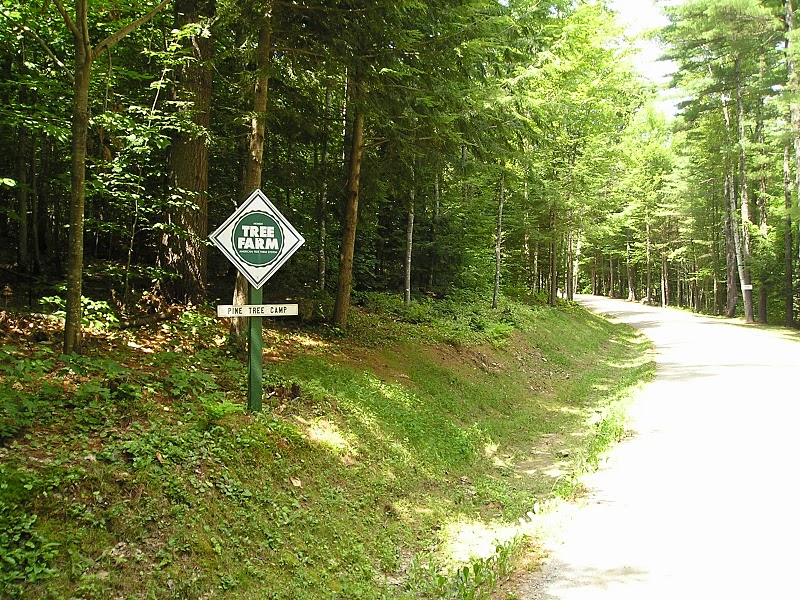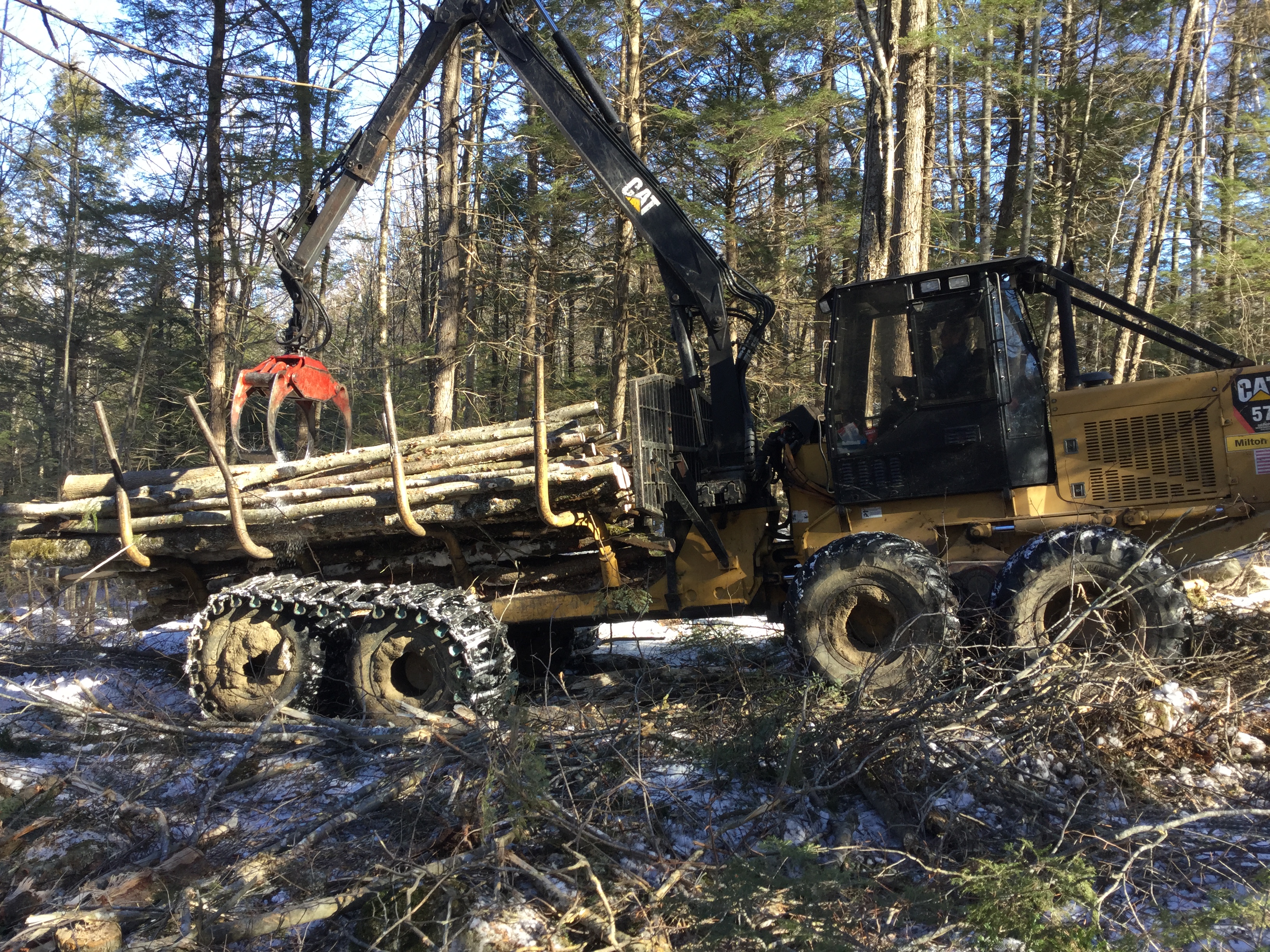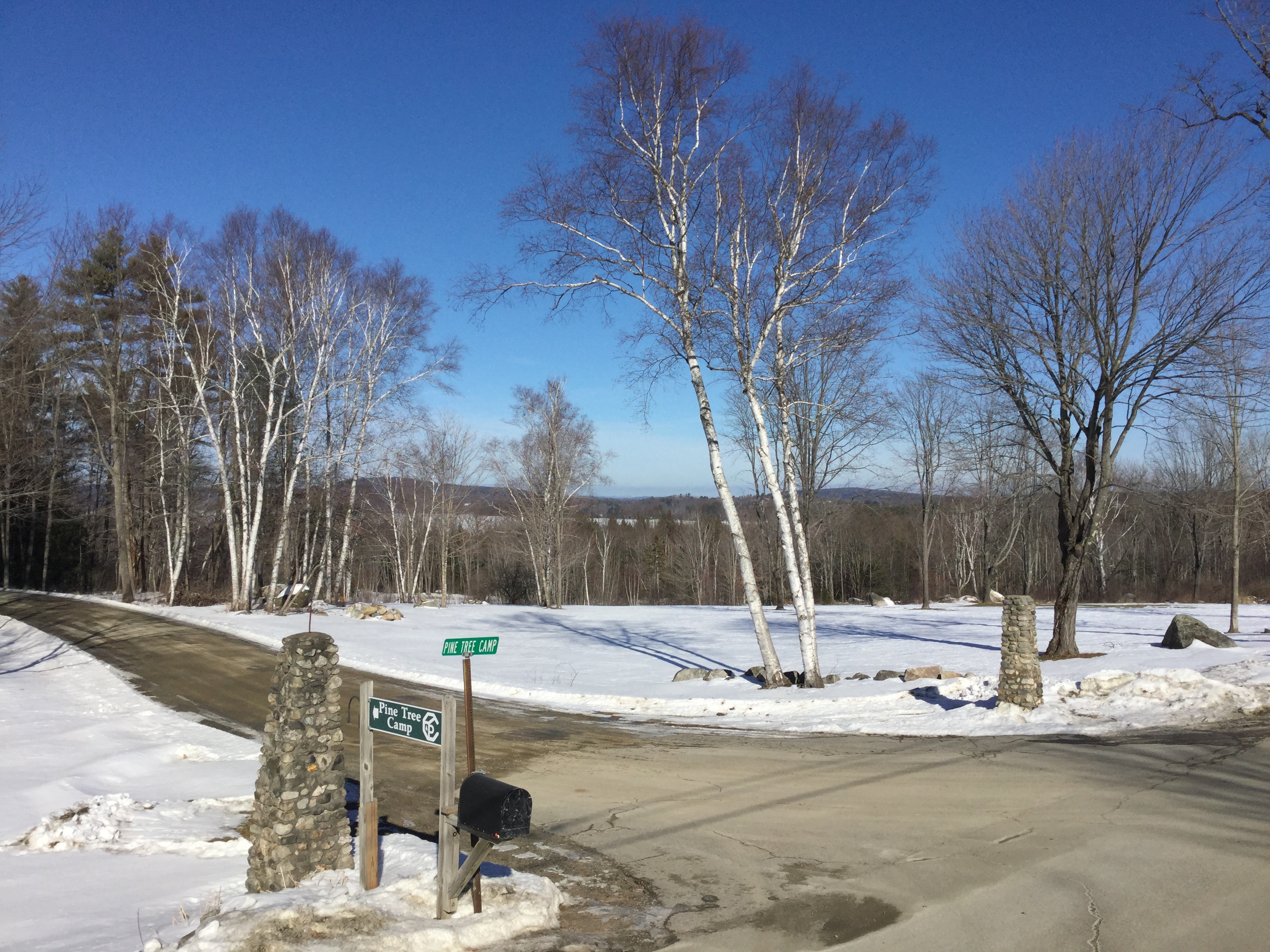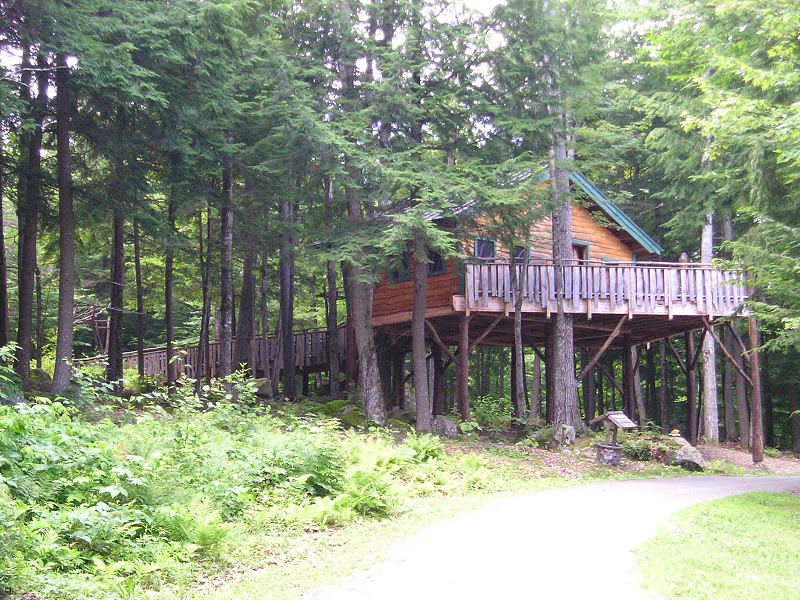Pine Tree Society from Maine

What makes them outstanding?
The Pine Tree Society’s primary goal has been to provide quality recreational experiences designed to improve the overall health of disabled individuals. This is a unique landowner objective that capitalizes on a woodland value not often consciously recognized in traditional Tree Farms the ability to heal and restore the human spirit. It would have been very easy to adopt a passive, hands-off attitude towards their forest, using it only as a buffer from the rest of the world. Instead, the Pine Tree Society has embraced sustainable forestry as a means of enhancing their mission. As a result, they’ve harvested their woodlands in a way that opens up the woods yet maintains the Camp’s namesake stands of tall white pine trees, which incidentally is the official state tree.The Society’s desire and ability to involve the community at large also sets them apart from the typical woodland owner. Example: the Camp’s closest neighbor voluntarily takes care of the flowers and shrubs at the Camp entrance. She spends countless hours, planting, weeding watering and mulching. She is often an unofficial “greeter” talking with campers and their families. She reports that they marvel at the well-cared for woods, and how seeing the open meadow view at the entrance and the big beautiful pines along the drive into Camp helps relax any fears or anxieties people might have about coming to the program for the first time. And that's the moment when they see the Tree Farm sign.
Tree Farmer Story
 Located in Rome on a mile of pristine North Pond shore front and bordered by over a mile of Great Meadow Stream, Pine Tree Camp is a place where people with disabilities have come to enjoy being in the Maine woods since 1945. The facility is fully adapted to meet the special needs of campers. The barrier-free setting allows them to do things they otherwise wouldn’t be able to experience, like hiking on accessible nature trails, going swimming, fishing, sleeping overnight in a tent and climbing up into a fully accessible tree house all designed for people who use wheelchairs and other mobility devices. The Campers enjoy a fully accessible trail system in a healthy, well managed forest that’s a habitat for creatures like deer and pine marten, which campers can have the thrill of seeing -- perhaps for the first time in their lives.At least as far back as 1890, the original camps and immediately surrounding forest of 100 acres were operated as a resort by the North Pond Club. Sportsmen and their families traveled from Massachusetts, New York and New Jersey to enjoy the Maine woods. The Hunter-Rhodes Lumber Company managed the woodlot for timber. In 1945,the Pine Tree Society rented the camp for the summer, and brought 75 handicapped children to the site for eight weeks. That first season was very successful, and the Society decided to acquire the property and continue the endeavor, as they do today. Along the way, other lots and parcels have been purchased, to reach the current ownership. Against the prevailing trend of increasing forest fragmentation, this aggregation of woodlands is truly noteworthy.As mentioned above, the mission of Pine Tree Camp is to serve mentally and physically disabled children, adults, and their families through respite care by offering a well-managed program of outdoor recreational activities, designed to meet the needs of individuals who might not otherwise be able to enjoy such experiences. Even in the heavily wooded state of Maine, to have the backdrop of 285 acres to support that mission is rare.Historically, timber management has been essential to the camp existence.
Located in Rome on a mile of pristine North Pond shore front and bordered by over a mile of Great Meadow Stream, Pine Tree Camp is a place where people with disabilities have come to enjoy being in the Maine woods since 1945. The facility is fully adapted to meet the special needs of campers. The barrier-free setting allows them to do things they otherwise wouldn’t be able to experience, like hiking on accessible nature trails, going swimming, fishing, sleeping overnight in a tent and climbing up into a fully accessible tree house all designed for people who use wheelchairs and other mobility devices. The Campers enjoy a fully accessible trail system in a healthy, well managed forest that’s a habitat for creatures like deer and pine marten, which campers can have the thrill of seeing -- perhaps for the first time in their lives.At least as far back as 1890, the original camps and immediately surrounding forest of 100 acres were operated as a resort by the North Pond Club. Sportsmen and their families traveled from Massachusetts, New York and New Jersey to enjoy the Maine woods. The Hunter-Rhodes Lumber Company managed the woodlot for timber. In 1945,the Pine Tree Society rented the camp for the summer, and brought 75 handicapped children to the site for eight weeks. That first season was very successful, and the Society decided to acquire the property and continue the endeavor, as they do today. Along the way, other lots and parcels have been purchased, to reach the current ownership. Against the prevailing trend of increasing forest fragmentation, this aggregation of woodlands is truly noteworthy.As mentioned above, the mission of Pine Tree Camp is to serve mentally and physically disabled children, adults, and their families through respite care by offering a well-managed program of outdoor recreational activities, designed to meet the needs of individuals who might not otherwise be able to enjoy such experiences. Even in the heavily wooded state of Maine, to have the backdrop of 285 acres to support that mission is rare.Historically, timber management has been essential to the camp existence.
The Society looks to a healthy forest as a sustainable source of income, which is very important to support the overall purpose of the Camp. In fact, wood cutting has always been a part of the landscape. Timber harvesters from the surrounding communities have helped to implement the Camp’s forest management plans over the history of the Camp.The level of skill and care they have provided has greatly enhanced the multiple values of the current forest. In 1979, the Camp became a Cooperator with International Paper Company’s Landowner Assistance Program. This brought in the expertise of professional foresters, who participated in managed timber harvests in 1979, 1991-5 and 2000. The Camp became a certified Tree Farm in 1993. Although the Landowner Assistance Program ended in 2001, the Camp receives professional forestry advice at least every five years, through the inspection process when it recertifies to the National Tree Farm Standards.Most recently, the Camp has signed an agreement with SAPPI North America’s Sustainable Forestry Program. This brings the Camp under Sustainable Forestry Initiative (SFI) certification and also makes it a member of SAPPI’s Forest Stewardship Council certified group. Both programs are independently audited on an annual basis.
became a Cooperator with International Paper Company’s Landowner Assistance Program. This brought in the expertise of professional foresters, who participated in managed timber harvests in 1979, 1991-5 and 2000. The Camp became a certified Tree Farm in 1993. Although the Landowner Assistance Program ended in 2001, the Camp receives professional forestry advice at least every five years, through the inspection process when it recertifies to the National Tree Farm Standards.Most recently, the Camp has signed an agreement with SAPPI North America’s Sustainable Forestry Program. This brings the Camp under Sustainable Forestry Initiative (SFI) certification and also makes it a member of SAPPI’s Forest Stewardship Council certified group. Both programs are independently audited on an annual basis.
In fact, Pine Tree Camp has been visited twice during the recent harvests as part of compliance audits for each set of standards. Combined with the American Tree Farm standards, Pine Tree Camp is actually triple certified!The Camp’s mission embraces the use of the camp facilities as a four season site available to the public, including recreationists and schools and educational groups. The Camp has hosted several Maine Snowmobile Association Annual Meetings and workshops, using the nature trails and wood roads to demonstrate proper trail maintenance and signage. The Camp allows public access for outdoor recreation, particularly for hunting and fishing. Public events held at the camp include the Annual Fun Day, fishing derbies, and gatherings of local snowmobile and ATV clubs.Public elementary school classes from as far away as the Lewiston-Auburn area (nearly 50 miles away) come to the Camp for spring and fall field trips. The kids especially love the Forever Young Tree House and nature trails. Colby College in nearby Waterville has held an event at the Camp that pairs foreign students with students from Maine as a way to acclimate the new arrivals.Perhaps this anecdote from another Tree Farmer who was part of the selection team for the statewide Outstanding Tree Farmer of the Year (OTFY) award illustrates the uniqueness of the Pine Tree Camp story: “I knew about Pine Tree Camp because of my professional experience working with children with a variety of disabilities and I was aware of the great work that the staff does with these children. I admittedly questioned how such a focused mission could be integrated with Tree Farm activities. My visit to the Camp as a member of the OTFY inspection committee was a true revelation. I was impressed by the commitment of the Camp leaders to include good forest practice as an integral part of their management activities. There was strong evidence of use of best management practices, of sustainable harvest practices and of respect for the forest. Most importantly, I was impressed by how the nature-based recreation and learning of the campers is integrated into what Pine Tree Camp does as a Tree Farm. The recognition as OTFY is well deserved.”

Wood
The past harvesting history has been detailed above. The most recent round of commercial harvests (2012 to 2016) have been variants of extended shelter wood cuts, as recommended in the current forest management plan. D.R. Pepper Wood Harvesting Company, from nearby Fayette, Maine, provided the timber harvesting services. In 2015, D.R. Pepper was awarded Logger of the Year from the Maine Forest Products Council. Forestry expertise has been provided by John Starrett, under the auspices of SAPPI North America’s FSC-certified stumpage procurement program. It is worthy of note that Starrett has been involved with Pine Tree Camp for 25 years, going back to the improvement harvests in the 1990s. Approximately 2,200 cords all products have been harvested since 2012. 80% of the trees removed are of pulpwood quality, thereby releasing the crowns of more valuable crop trees to grow towards optimum timber value (saw log and veneer log quality stems).
Natural regeneration is an integral part of the management process across the whole forest. The small gap canopy openings foster excellent reproduction of white pine, red oak, and other native, commercial species. The most recent harvests have covered all the areas included in the current recommended silvicultural practices. Timing of future harvest entries will depend on any natural occurrences (wind throw, insect infestation, or disease) and needs of the Camp. Camp faculty will maintain continuous forest health monitoring. Professional forestry advice will continue under the SAPPI North America program, and during regular Tree Farm inspections. The next round of harvesting is not anticipated for 15 to 20 years.
Water
All of the Camp’s woodlands drain either directly into North Pond or into the Great Meadows Stream, which is a key link in the Belgrade Lakes chain. In particular,the main access road slopes sharply toward the Pond. Therefore, protecting water quality and preventing soil erosion is a key concern for all Camp activities. The Camp, along with volunteers and contractors, has constructed and maintained a wide variety of Best Management Practices (BMPs) to manage run-off and protect the local watershed. These BMPs include bridges, diversion ditches and stabilization seeding of open areas. Great care is exercised when harvesting around the intermittent streams on the upper slopes. Logging trail stream crossings are minimized and approaches are stabilized with brush. In fact, the recent harvesting has all been done with modern “cut-to-length” woods processors and forwarders, employing the tops and limbs in the yarding trails to stabilize exposed soil and prevent rutting and run-off of sediment. It speaks to the good forestry management of the Camp that there is virtually no road or trail erosion as attested to by the excellent water quality of the Pond and associated streams.The camp also cooperates with the North Pond Association to manage the dam on Great Meadows Stream, which controls the water level of North Pond. This helps prevent damage to the shoreline from ice and excessive wave action.
Wildlife
The Camp’s woodlands clearly provide a wide range of habitat, from upland forest to forested wetlands and stream side riparian zones. Wildlife habitat management is important to the Camp in the general sense, rather than for any chosen species, to provide a diverse and informative experience for camp users.As part of the management planning process, foresters working with the Camp consult periodically with the Maine Natural Areas Program’s (MNAP) about any features of significance or concern. According to the most recent (2015) check of existing databases, no rare, threatened or endangered plants or animals have been identified on this woodlot. The MNAP checklist also indicates no Department of Inland Fish and Wildlife designated Essential or Significant Wildlife habitats on and near the property.Some parts of the property are worth mentioning as uniquely interesting, without being listed for any particular designation. The peat lands along the shore of North Pond in the northeast part of the tract are likely growing bog cranberries. The hardwood bottomland area along the Great Meadows Stream and the large diameter hemlock stand along North Pond west of the Camp buildings are worthy of note. There is also a small (+/- 1 acre) brown ash swale near the western boundary.
Recreation
Aesthetic values are closely associated with the campers' recreational experience. Improvements to full-access trails, now totaling 1.5 miles, and full access campsites, have been completed since 2005. The construction of a full access “Forever Young” tree-house in 2009 has been especially noteworthy. “Bob’s Bridge” is a small stream crossing on an accessible trail that incorporates a piece of the old Bangor-Brewer Bridge for a base. The bridge was constructed with assistance from the Cianbro Corporation, a nationally respected construction company with deep Maine roots. In 2006, the Camp worked with a timber harvester to reclaim approximately 9 acres of old field. Residual trees were selected to remain standing for shade, aesthetic beauty and some species diversity. Now, as campers and their families arrive at the Camp entrance, they have an exquisite long view of North Pond and the western Maine foothills and mountains.More accessible trail work is planned for the near future, to complete an in-woods loop from the so-called "Wilderness Trail" to the meadow. This will significantly extend the recreational trail system.


